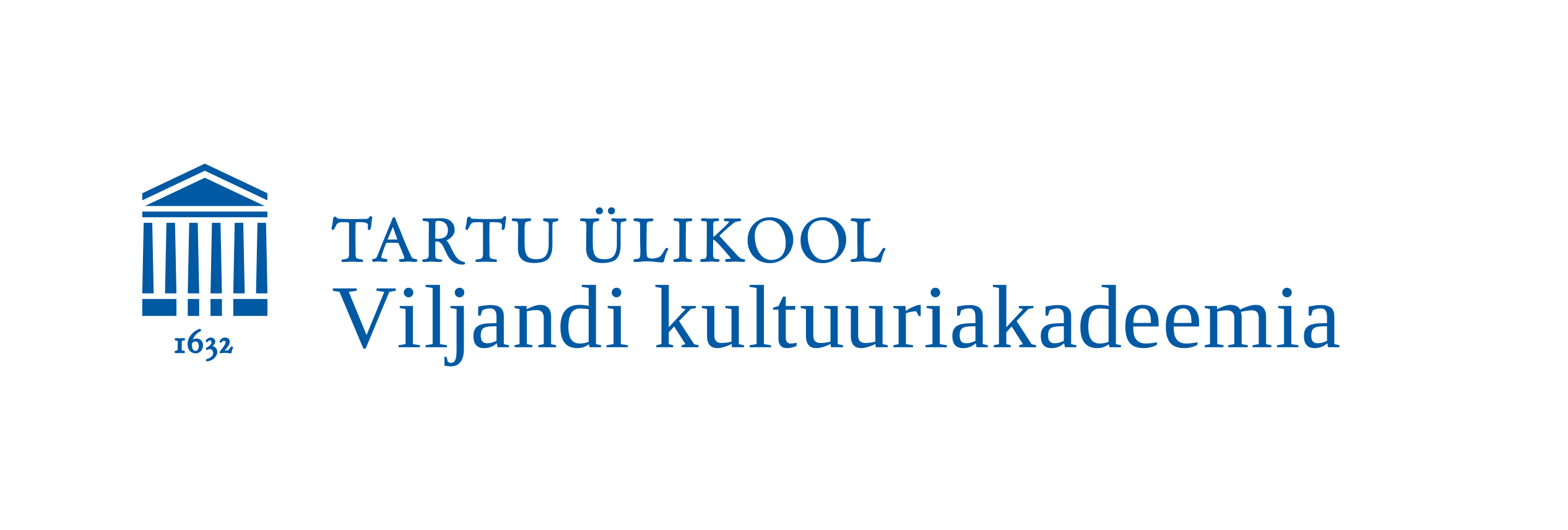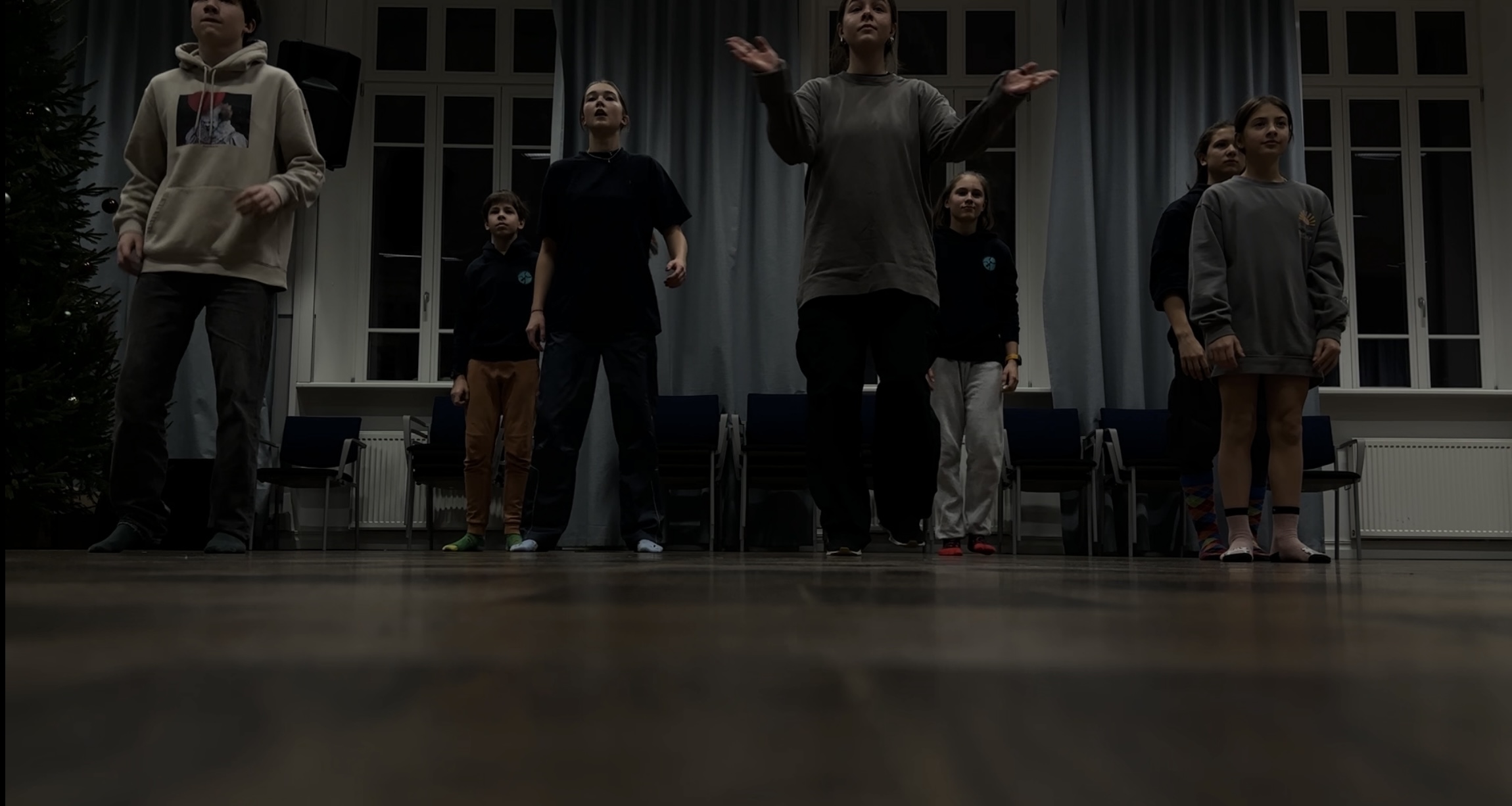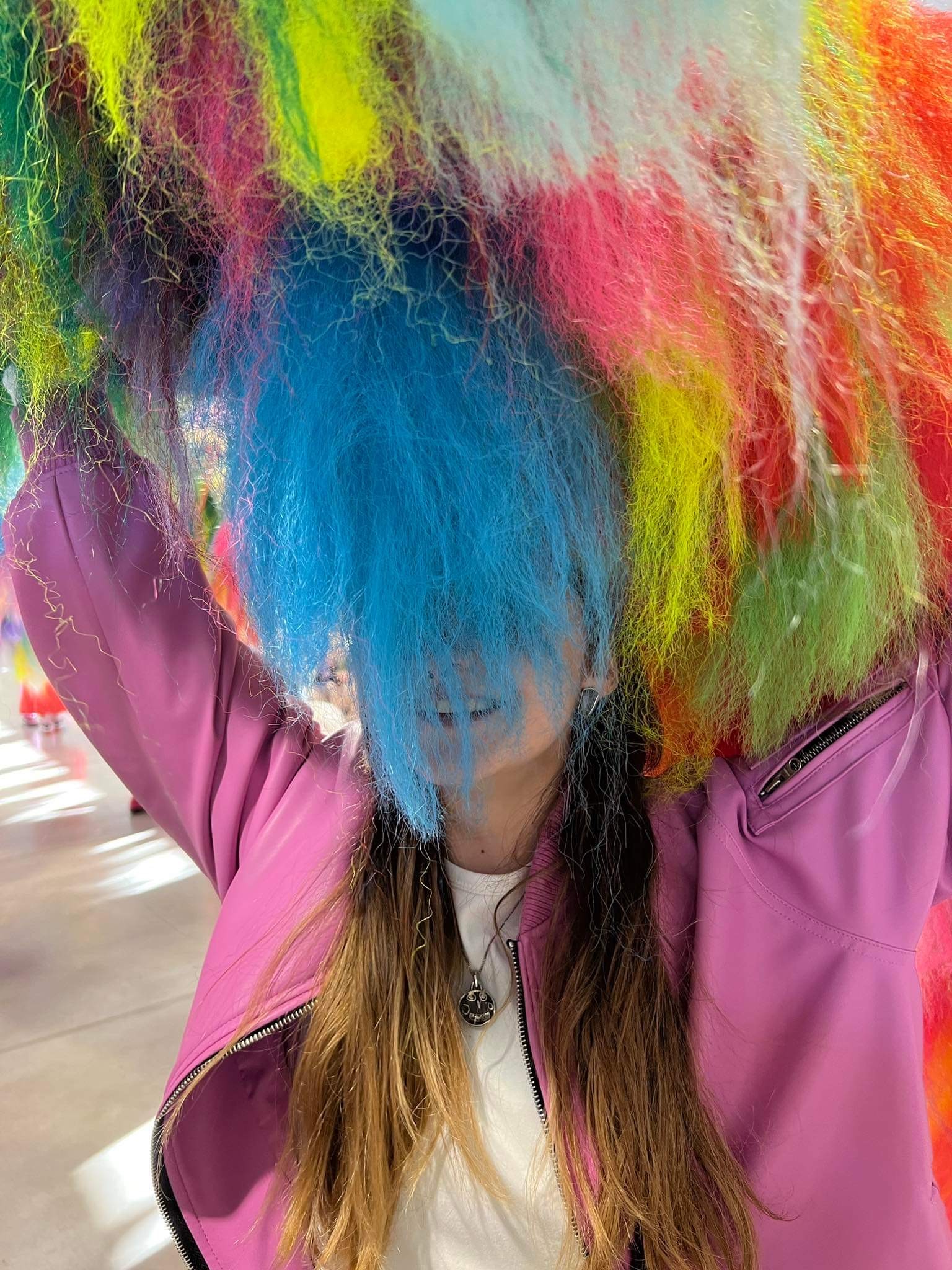“TEEKOND HAARAVA ETENDUSKUNSTNIKUNI HUVIHARIDUSES ETENDUSKUNSTI LABORATOORIUMI NÄITEL” (Juhendaja Kai Valtna)
LÜHIÜLEVAADE: Minu lõputöö eesmärk oli välja selgitada kuidas õpetada etenduskunstnike huvihariduses. Lõputöö praktilise osa viisin läbi Tartus Just Tantsukoolis, kus korraldasin Etenduskunsti laboratooriumit, millest olid oodatud osa võtma 16-19 aastased noored. Etenduskunsti laboratooriumi idee tekkis huvist etenduskunsti ning selles tegutsevate inimeste vastu. Mulle tundus, et tegemist on millegi avatud ning voolavaga, värske õhuga Eesti etendatud kunstide väljal, ent lähemal vaatamisel selgus, et õhk polnud sugugi nii värske ning mõiste tekitas teatriteadlastes, kes žanri defineerida proovisid, pigem paanikat ning mõjus väljapääsuna kunstnikele, kes end muul viisil määratleda ei suutnud. Töö käigus otsustasin loobuda etenduskunstile tehnika leidmisest ning keskendusin süsteemi loomisele, mis kergendaks etenduskunsti õpetamist huvihariduses. Kuigi antud süsteem pole veel valmis, on suur samm sellel teel siiski astutud. Töös toon välja neli alusmõistet (keha, vaim, kohalolu, x-faktor), millele oma süsteemi rajanud olen, samuti kaardistan erinevusi etenduskunsti ning tantsu ja teatri huvihariduse vahel.
Johanna Anett Toomel
Lõputöö autor
TÜ Viljandi kultuuriakadeemia
LÄBITUD ÕPPEKAVA: tantsukunst
SUMMARY: “The Journey to a Captivating Performing Artist in Extracurricular Education Illustrated by the Performing Art Laboratory” The aim of my thesis “The Journey to a Captivating Performing Artist in Extracurricular Education Illustrated by the Performing Art Laboratory.” is to find out how to educate performing artists in extracurricular education. The research was done based on the classes carried out in Just Tants dance school in Tartu, the classes were called the Performing Art Laboratory and it was open to youths aged 16-19. The idea of the Performing Art Laboratory came from my interest in performing art and the people who work in it. I had a feeling that it was something fluent and broad, a breath of fresh air in the performing arts field in Estonia. However, it turned out that the air was not as fresh as I had thought and would make the people who write about theatre panic as they would try to define the genre and offer an escape route to artists who don’t know how to categorize themselves otherwise. During my work I decided to move from trying to find a technique for performing art to putting together a system that would ease the teaching of performing art in extracurricular education. As of now the system is still not ready, but a big step has been taken in the right direction and the basis of it has started to come together. In this thesis I discuss the four basic pillars of the system: body, mind, presence and x-factor. I also map out the differences between performing art education in extracurricular education versus dance and theatre education in the same field.




